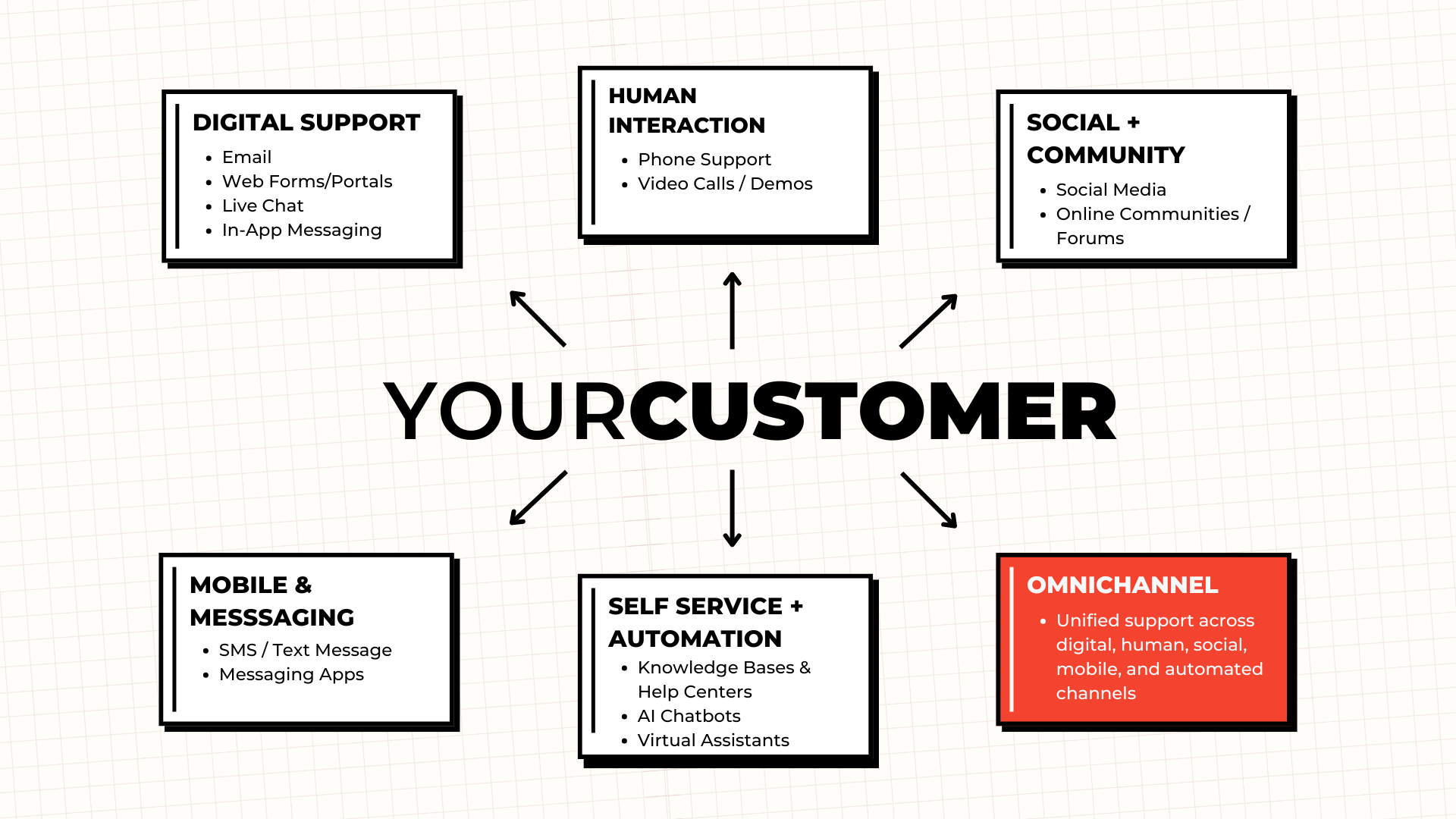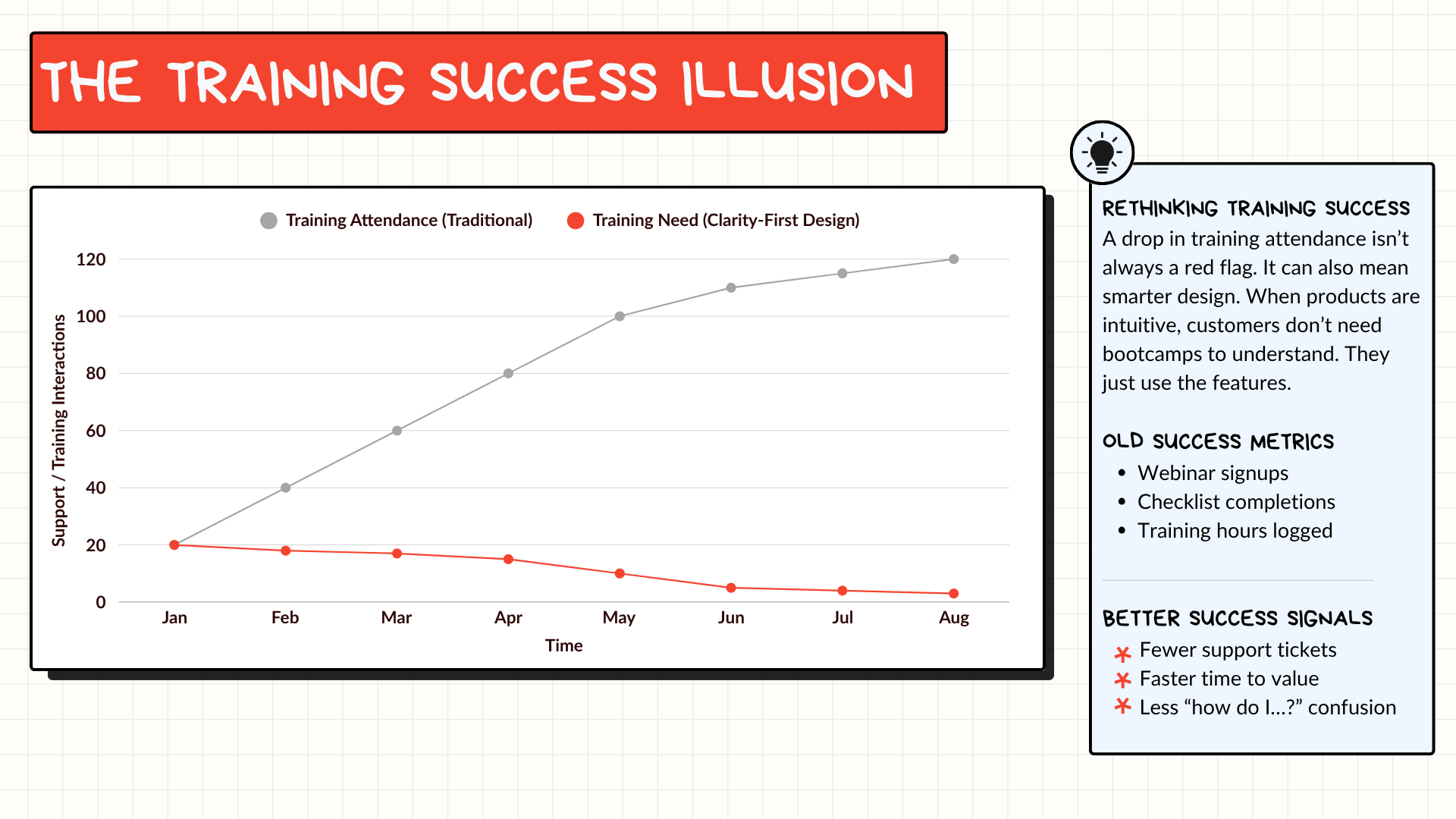Most companies get CX ownership wrong and it's costing them.
Your customers don't care about your org chart. When they interact with your company, they're having one continuous experience with your brand. The teams behind that brand are often irrelevant to the customer.
I see too many companies punting CX to a single team and hoping for the best. Marketing does their thing. Product builds features. Support answers tickets. Success manages renewals. Everyone stays in their lanes, and somehow it's supposed to feel seamless to the customer.
That might work for internal org charts, but it breaks down fast in the customer's real journey.
What Your Customers Actually Experience
Your customer typically discovers you through content marketing. Books a demo through sales. Gets onboarded by success. Gets help from support. Sees product updates from engineering. Engages with you on social media.
At every touchpoint, they're forming an opinion about who you are and whether you understand them.
On the surface it seems pretty straightforward, but it's often messier in real life. For example, Sales asks for company information during the demo signup. Then once the customer signs up, onboarding sends a kickoff form asking for the exact same details. Support doesn't know about the conversation they had with success last week. Product notifications don't connect to their actual usage patterns.
What that leaves us with are team's optimizing for their own swim lane and no one truly watching the full race. The customer feels it immediately as friction, repetition, and disconnection.
Your CX isn't falling apart at the ticket level. It's falling apart in the space between teams who never or rarely talk to each other.
Why AI Changes Everything
Now that AI is everywhere, customers expect more than speed. They want every interaction to feel tailored, consistent, and human to them. That level of seamless personalization can't happen when your teams operate in silos.
AI isn't just raising expectations for our customers. It's exposing just how disjointed some of our processes have been all along.
Omnichannel is the right vehicle to improve and deliver that elevated experience, but alignment across systems only works if the people behind them are aligned too. You can build the most sophisticated tech stack in the world, but without human and process alignment, it's just a system with no soul.
The companies struggling most are the ones where everyone assumes someone else is handling it. Marketing thinks it's post-sale. Support thinks it's about resolving tickets. Product thinks it's about building better features. Success thinks it's about retention metrics.
Everyone's partly right. And completely wrong.
Three Things That Actually Work
Clear Internal Ownership – More than just saying Support owns customer experience. Someone with authority to coordinate across teams, skills to spot systemic gaps, and commitment to push through the friction when departments have to change how they work.
A CX Playbook – A living blueprint is not just for actions, but for how every channel should feel. Tone, handoffs, data flow are mapped and owned. When everyone knows the playbook, individual decisions start adding up to a coherent experience.
A CX Advisory Council – Channel owners sitting in the same room regularly. Not for status updates, but for real coordination. Marketing, sales, product, support, and success looking at customer feedback together, identifying where the experience breaks down, and making decisions about how to fix it.
The Real Work Starts Now
Building unified customer experience requires something most companies aren't comfortable with. Admitting that the way you've been working isn't working anymore.
It means your marketing team needs to care about what happens after the lead converts. Your product team needs to think about how their features affect support volume. Your success team needs to coordinate with sales on what promises were made.
It's messier and harder than keeping everyone in their lanes. But it's also the only way to build experiences that actually serve your customers instead of just serving your internal processes.
You don't fix broken CX by working harder. You fix it by working together with clarity, with ownership, and with your customer at the center. Start there.
The thoughts and opinions in this article are my own and don't represent the views of any organization or employer. If this perspective resonated with you, I'd love to have you along for more conversations about building better customer and employee experiences.
If you are interested in exploring a partnership with Customer Korner to assist your organization, please reach out to mike@customerkorner.com









Comments